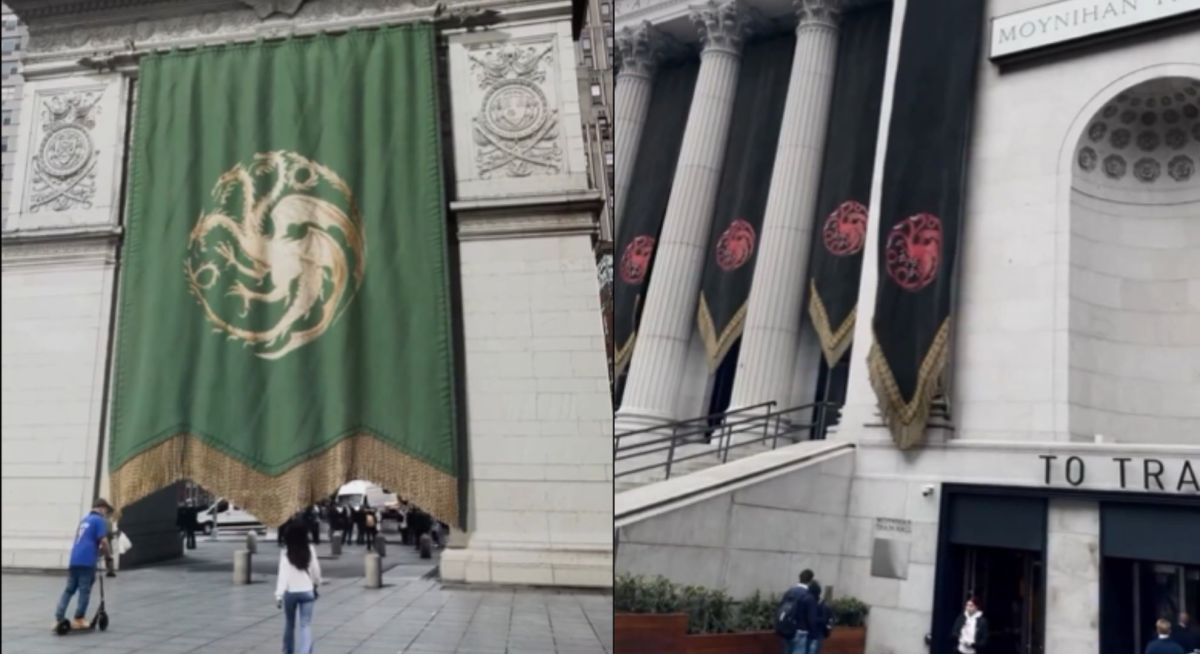
Are the Game of Thrones Flags Around NYC Real? Discover the Truth!
In recent days, residents and visitors of New York City have been buzzing with excitement over what appears to be an elaborate display of “Game of Thrones” themed banners adorning some of the city’s most iconic landmarks. Social media is ablaze with images showing massive flags and banners emblazoned with symbols from Westeros, leading many to wonder: are these flags real?
Let’s dive into the fascinating intersection of reality and CGI, and uncover the truth behind these captivating visuals.
The Buzz Around NYC
It all started on June 10, 2024, when videos surfaced online depicting stunning “Game of Thrones” banners hanging from buildings and landmarks throughout New York City. Many fans of the show, eager for a sense of nostalgia and an exciting promotional event, eagerly shared these images. Some were even spotted discussing their experiences of seeing these flags in real life around beloved spots like the Empire State Building and Central Park.
However, the enthusiasm came to a screeching halt when reports confirmed that the banners were not physically present in the city. Instead, they were generated through CGI (computer-generated imagery) technology. This revelation sent a wave of confusion and disappointment among fans, who had hoped for a grand “Game of Thrones” takeover in the heart of NYC.
Understanding CGI and Its Role
CGI is a magical tool that allows creators to generate visually striking images and scenes that may not exist in reality. From blockbuster films to stunning commercials, CGI is often used to create illusions that captivate audiences and tell compelling stories without the constraints of the physical world. In this instance, the “Game of Thrones” banners seen around NYC were designed to promote the upcoming second season of “House of the Dragon,” the prequel series set in the same universe as the original show.
While CGI can create breathtaking visuals, it is essential to remember that what one sees is often a carefully curated and edited representation rather than a tangible experience. The banners may be eye-catching, but they are part of a digital marketing strategy rather than a real-world phenomenon.
The Impact on Fans
For many fans, the thought of “Game of Thrones” invading NYC felt like a dream come true. The show, known for its intricately woven tales of power, betrayal, and dragons, created a passionate fandom, many of whom would jump at the chance to experience a piece of Westeros in their own city. While the banners stirred up excitement, the truth about their CGI nature may have left some feeling a bit deflated.
However, rather than viewing this as a disappointment, fans can appreciate the effort put forth by the marketing team. This innovative approach demonstrates how technology can be harnessed to engage audiences and spark conversations about their favorite shows. Social media platforms became a canvas for fans to share their reactions, theories, and perspectives on the excitement leading up to the new season.
Embracing the Digital Experience
As the world becomes increasingly interconnected through digital platforms, experiences like the “Game of Thrones” CGI banners symbolize a shift in how fans engage with their favorite franchises. While the physical flags may not exist, the conversations, interactions, and excitement generated online are very real.
Fans can embrace the digital experience by participating in discussions on forums, sharing content on social media, and even following the official accounts related to their favorite shows. Many platforms now offer virtual events, watch parties, and digital merchandise for fans to engage with their beloved series in new ways.
Final Thoughts
While the “Game of Thrones” flags around NYC may be nothing more than stunning CGI creations, they have successfully captured the imagination of fans everywhere. This creative marketing strategy serves as a reminder of the power of storytelling, even in a digital format.
As we look forward to the second season of “House of the Dragon,” let us celebrate the ways technology enhances our experience as fans, bringing us closer to the worlds we love, even if it isn’t always in the way we expect. So, whether you’re bookmarking your favorite fan theories online or discussing the latest episode with friends, remember: the magic of Westeros lives on, both in our screens and in our imaginations!
